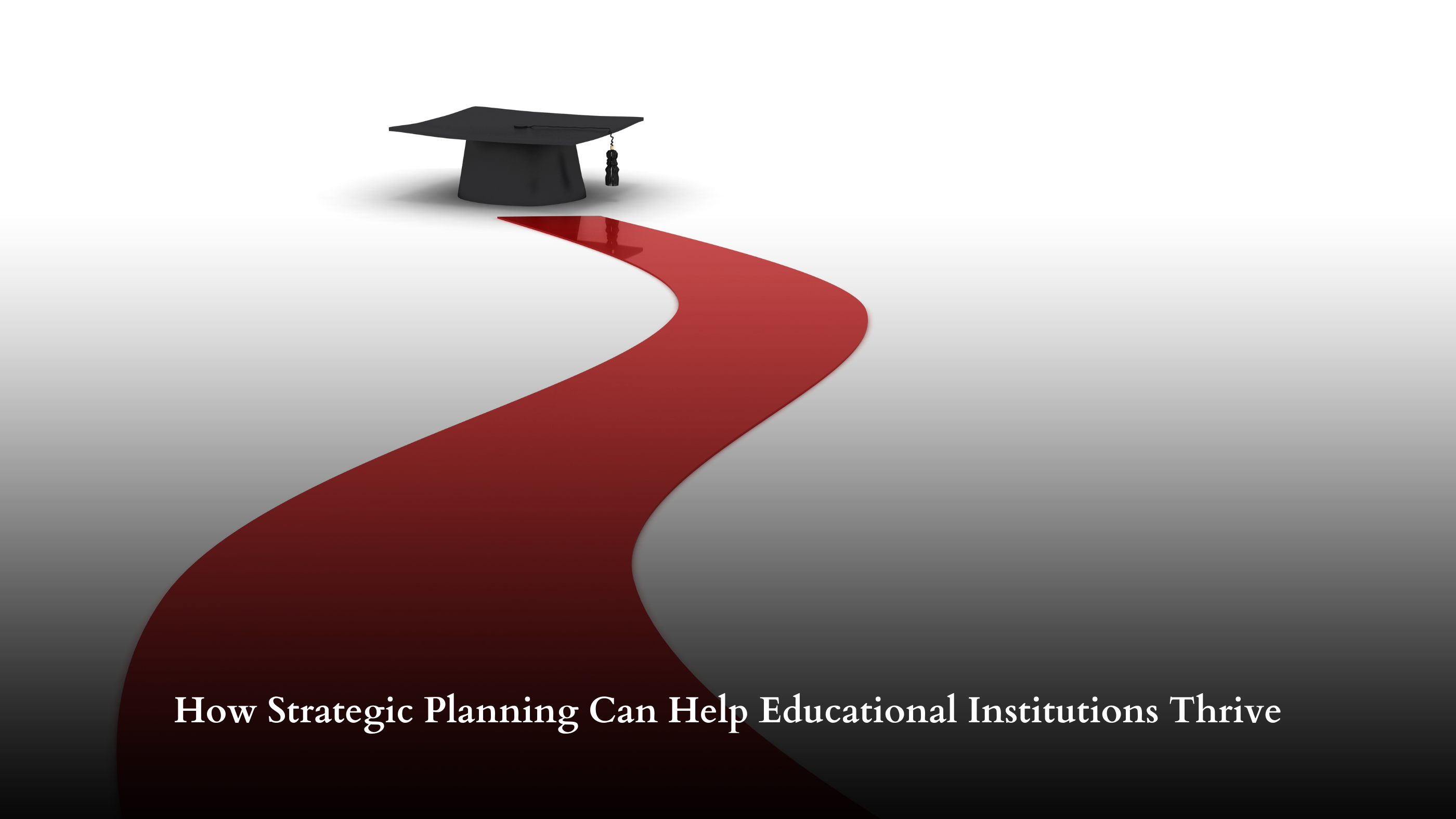
Educational institutions whether universities, colleges, technical institutes, or even research centers are facing rapid change. From the growing need for online education to budget constraints and shifting student expectations, it’s clear that simply reacting to challenges isn’t enough. Strategic planning offers a way for these institutions to prepare for the future with purpose and clarity. It provides a framework to set priorities, align resources, and ensure that both academic and operational efforts stay focused on long-term goals.
In this post, we’ll look at how strategic planning can benefit educational institutions as a whole and how they can make the process both meaningful and practical.
Why Strategic Planning Is Crucial for Educational Institutions
1. Adapting to Rapid Change
Educational institutions are being forced to rethink how they operate in the face of changing trends. This includes everything from the rise of online learning platforms to students’ demand for flexible, personalized education options. Without a strategic plan, it’s easy for institutions to fall behind. A plan ensures that technology, curriculum, and resources evolve in sync, enabling institutions to stay relevant and serve students effectively, whether in physical classrooms or virtual spaces.
2. Aligning Resources with Institutional Goals
Universities, research centers, and technical institutes often juggle competing priorities—like managing student services, maintaining infrastructure, supporting research, and delivering quality education. A strategic plan helps institutions prioritize resources and align them with their core goals. For example, a university focused on expanding research output might invest more in faculty development and partnerships, while a technical school looking to increase student enrollment might direct funds toward marketing and admissions initiatives.
3. Ensuring Long-Term Sustainability
Funding is often a major challenge, especially for public institutions dependent on government budgets or for private institutions navigating competitive markets. Strategic planning gives these institutions a roadmap to manage resources efficiently and plan for future growth. It also allows them to diversify revenue streams, such as by creating new programs, launching professional development courses, or developing partnerships with industries.
How the Strategic Planning Process Works
The planning process for educational institutions is about more than just setting lofty goals. It involves practical steps to ensure that everyone in the organization is working toward the same vision. Here’s how it works:
1. Involve Key Stakeholders Early On
Strategic planning works best when everyone—faculty, students, alumni, administrators, and external partners—has a voice in the process. This ensures the plan reflects a broad range of perspectives and garners support from those who will implement it. Involving diverse stakeholders builds a sense of ownership, making it easier to move from ideas to action.
2. Set a Mission and Vision to Guide the Institution
Every institution needs a mission (the “why”) and a vision (the “where”) to guide its strategic decisions. For example, a research university focused on environmental sustainability might define its vision as becoming a global leader in renewable energy innovation. Every goal in the plan must align with this larger vision, keeping efforts focused on the institution’s purpose.
3. Establish Clear, Actionable Goals
Good strategic goals are specific, measurable, and realistic. Instead of vague ideas like “improve student experience,” institutions can set a concrete target: “Launch two new student support programs in the next academic year and reduce dropout rates by 10% over the next five years.” This clarity helps keep everyone aligned and makes it easier to track progress.
4. Monitor Progress and Adjust as Needed
A strategic plan isn’t a “set-it-and-forget-it” tool. Institutions need to track progress regularly and be willing to adjust course when necessary. For example, if enrollment goals aren’t being met, the institution might pivot to focus on new recruiting strategies or expand online course offerings. Regular progress reports and feedback loops are essential for staying on track.
Overcoming Common Challenges in Strategic Planning
1. Managing Resistance to Change
Change can be tough, especially in larger institutions with established traditions. Faculty or administrators may feel uneasy about new strategies. The solution? Involve people from the start and clearly communicate how the changes will benefit them and the institution. Transparency builds trust, making it easier to get everyone on board.
2. Avoiding Overly Complex Plans
Some strategic plans try to cover too much, leading to confusion and burnout. A plan should focus on a few key priorities and break them down into manageable steps. Keeping things simple helps everyone stay engaged and reduces the risk of initiatives getting lost in the shuffle.
3. Maintaining Momentum Over Time
A strategic plan can easily lose momentum if it’s not actively managed. Institutions need regular check-ins to measure progress, celebrate small wins, and identify areas that need adjustment. Some institutions use project management tools or dashboards to track their goals and keep everyone accountable.
What Does the Future Hold for Strategic Planning in Education?
Strategic planning will become even more critical as institutions deal with emerging challenges. The future of education will likely include:
- Blended Learning Models: Many institutions are shifting toward a mix of online and in-person learning, requiring strategic planning to manage this transition smoothly.
- Increased Focus on Equity and Inclusion: Institutions will need to ensure that students from all backgrounds have access to quality education and the resources they need to succeed.
- Stronger Industry Partnerships: As the gap between education and industry narrows, strategic plans will include more collaborative programs with businesses to prepare students for future careers.
Final Thoughts
Strategic planning isn’t just a formality—it’s a way for educational institutions to stay focused, use their resources effectively, and adapt to a constantly changing world. Whether it’s a research university, a community college, or a technical institute, every educational institution benefits from having a clear roadmap that aligns its actions with its mission and long-term goals.
The key to successful strategic planning is involving everyone, keeping things simple, and staying flexible. Plans aren’t meant to be rigid; they should evolve as challenges arise and opportunities appear. Institutions that embrace strategic planning today will be better prepared for the future—and ready to create lasting impact for their students, faculty, and communities.
Recent blog posts
Subscribe to get Notified
Subscribe to learn about new product features, the latest in technology, solutions, and updates.


